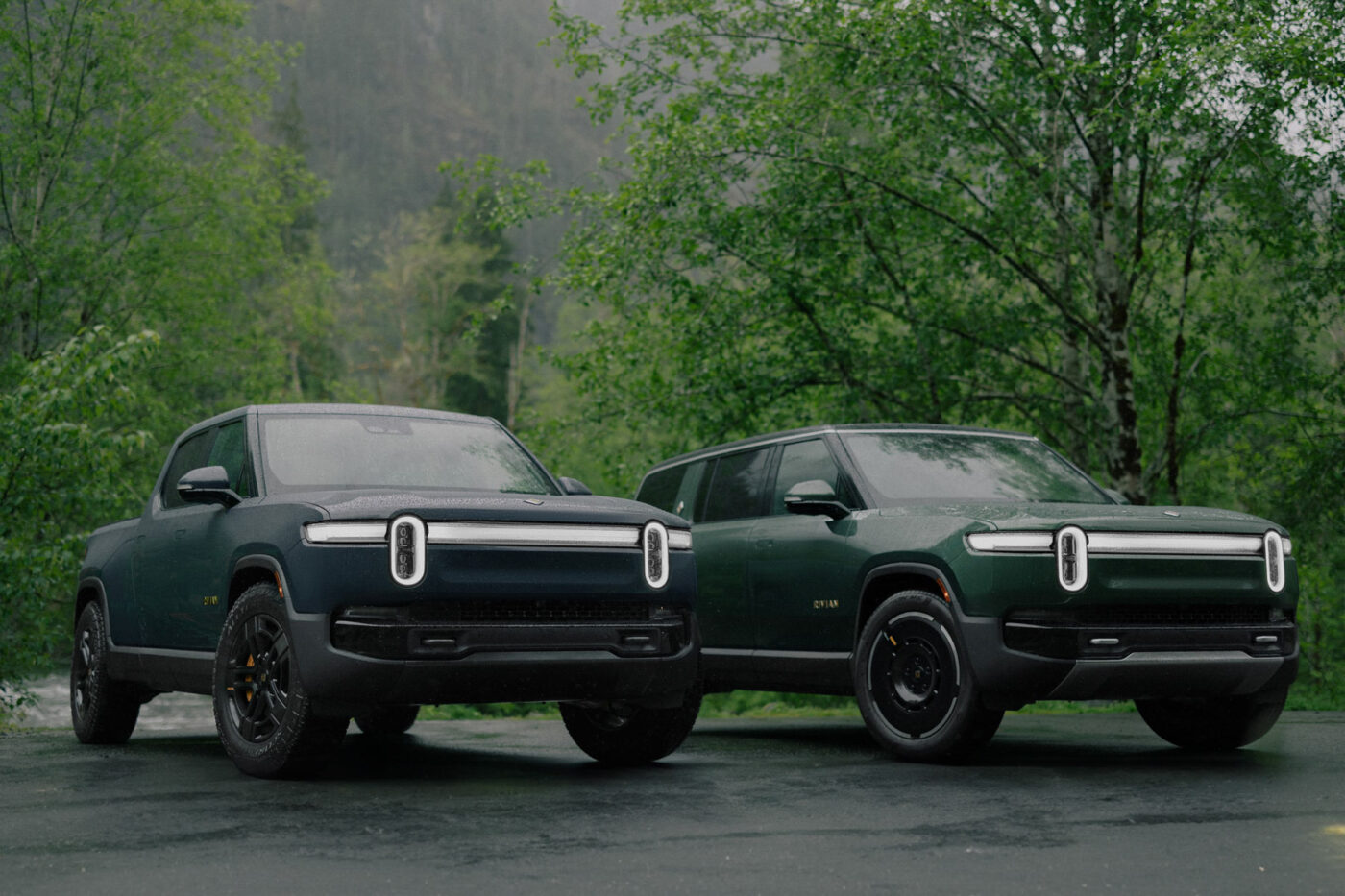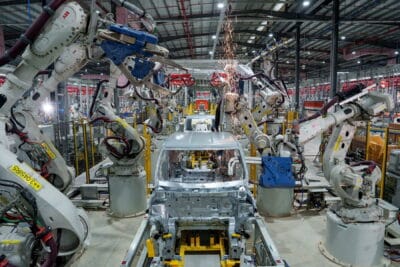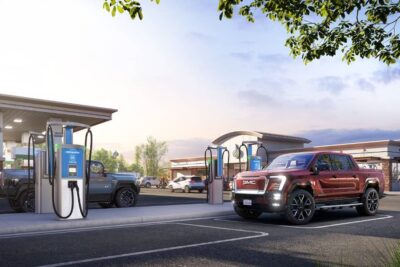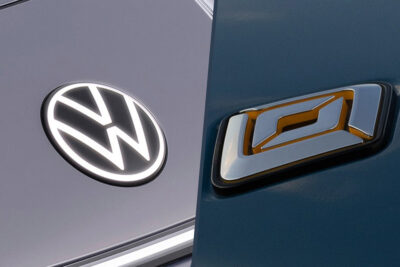Rivian revises R1 models
Rivian’s new electric SUV and pickup have seen improvements made to the drive, batteries and software, among other things. Rivian itself speaks of the “second generation” of the R1S and R1T, although visually the “new” models are hardly distinguishable from their predecessors. The eye-catching Rivian front end with the wide light strip and upright headlights remains.
The American electric carmaker says there will be “hundreds” of hardware improvements, more power and completely redesigned software. The drive systems have also been completely revised. The electric motors were developed by Rivian and manufactured in-house. The SUV and pickup are only available with all-wheel drive, but with three configurations: The basic variant uses two motors, while the company also offers a tri-motor layout (two motors on the rear axle, one at the front), and a quad-motor with one motor per wheel.
This quad engine is said to have an output of 754 kW (original specification: 1,025 hp) and 1,624 Nm of torque (original specification: 1,198 lb-ft). This should enable the Rivians to accelerate to 96 km/h (60 mph) in under 2.5 seconds. As Rivian positions its vehicles – at least in terms of marketing – more towards adventure and off-road, the controllability of the four-engine drive is likely to play a more important role off-road than the maximum performance values. The dual engine has an output of 489 kW, and the tri-engine 625 kW.
The batteries are also new: For the Large and Max options, Rivian wants to have further developed the battery modules so that more efficient packaging is possible and the batteries are easier to manufacture and maintain – one module now consists of 26 instead of 47 parts, and the pack has even gone from 41 to 16 parts. In total, 70 kilograms and production costs have been saved. The company does not state whether other cells are also used. The range with the Max pack is 420 miles or 676 kilometres. The Standard pack has also been revised, and there are definitely new cells here: The basic battery has been changed to an LFP chemistry. But here, too, the cells are said to be round cells in 2170 format. However, Rivian does not state the energy content of the new packs in the press release – according to earlier reports, the new LFP battery will have 92 kWh and the Max pack 149 kWh.
According to Rivian, the vehicles have not only been further developed with such basic features but also in detail. For example, there are new 22-inch rims with aero covers for a longer (standard) range. And there have also been far-reaching changes under the bodywork, which are not usually part of a model upgrade for traditional car manufacturers: The number of computers installed has been reduced from 17 to 7 – which means that 2.6 kilometres less cable is installed in each individual vehicle. This not only reduces weight and costs but also makes production easier.
Prices for the second generation R1S, which is available immediately, start at 75,900 US dollars and the R1T at 69,900 US dollars. From 2026, Rivian then plans to deliver its new R2 model, which is significantly cheaper with prices starting at around 45,000 US dollars and will also be coming to Europe.
Reporting by Sebastian Schaal





0 Comments